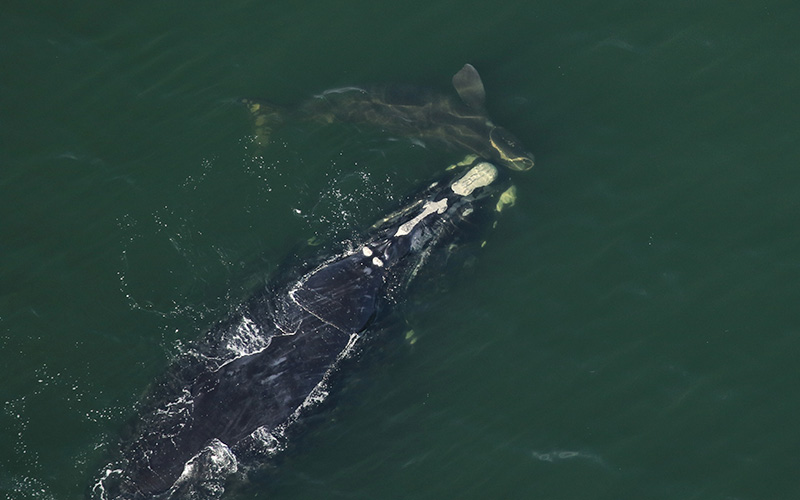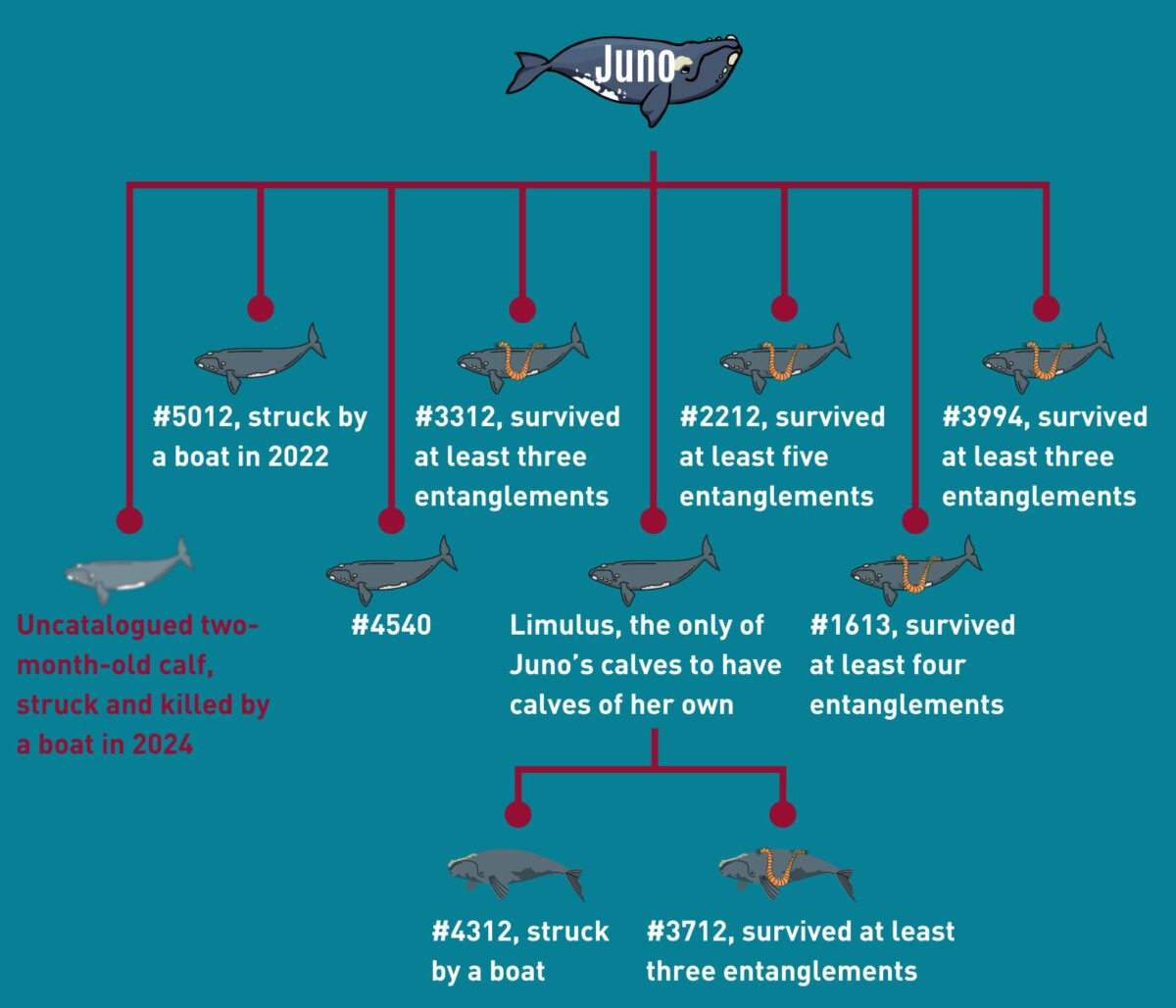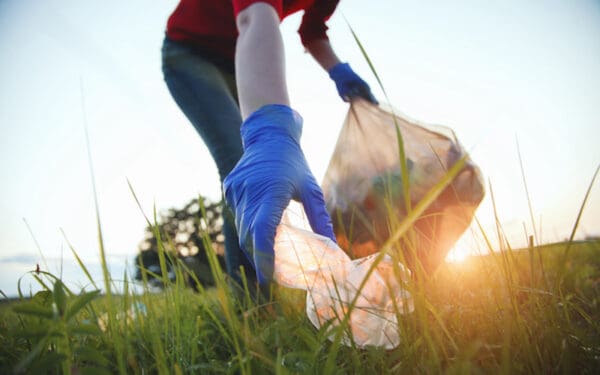
Juno swimming with her calf, before the vessel strike that took the calf's life. Photo: Florida Fish and Wildlife Conservation Commission under NOAA Permit #26919.
When I heard the first North Atlantic right whale baby of the season had been born last November, I was thrilled. This was my first season working on right whale conservation, so I delighted in seeing pictures of the little guy swimming alongside its mother. I felt especially devastated when barely a month later, pictures surfaced of the calf with brutal wounds slicing open its face.
A boat had already struck the first calf of the 2023/2024 season. This tragedy could have been avoided. But the government refuses to implement reasonable speed restrictions for ships and boats, even in areas where officials know right whale mothers and babies migrate. That makes these collisions common and often fatal. Sure enough, after an agonizing two months, the calf’s body washed ashore on the Georgia coast.
Unfortunately, this calf, the offspring of a mother named Juno, wasn’t alone in its fate. Scientists also believe that four of the other twenty calves born this season didn’t survive, in one case because a boat killed the calf’s mother.
Four older whales have died this year in addition to the calves. Vessel strikes killed two, an entanglement in fishing gear claimed another, and the fourth’s cause of death is unknown. Nine total deaths are more than the number scientists say right whales can afford to lose over an entire decade, all lost in under six months. With barely 360 right whales still swimming off our shores, this is a tragic and unsustainable situation.
Every Whale Is Part of a Family
When I began researching Juno’s family history, the toll that human activities had taken on her family stunned me. Juno has borne seven other calves and has two grand calves that we know about. Among them, they’ve been entangled in fishing gear a brutal 24 times and hit by vessels twice in addition to the blow that killed Juno’s youngest baby – and these are just the documented injuries. We don’t know if the boat that killed her calf also injured Juno.
The human threats that endanger right whales impact them indirectly as well as killing them outright. Right whale mothers give birth to a single calf at a time. In the past, a healthy female would calve every three to four years, meaning she could give birth to many calves in her 80-plus-year lifetime.
However, today, no right whale lives to 80. And many mothers only calve every nine to ten years, cutting the birth rate in half. Scientists believe the stresses that female whales face from human activities in the ocean leave little energy to birth and care for a calf. Vessel strikes often leave surviving whales weakened, bearing painful scars. Those that are entangled in fishing gear grow exhausted from the pain of dragging that heavy gear wrapped around their bodies – sometimes for thousands of miles. The gear also may interfere with their ability to eat.
Initially, I was pleased to hear those fifteen calves had survived the season. After all, some years have yielded zero calves. Unfortunately, scientists say that we need around 50 calves a year for right whales to recover and thrive. Fifteen calves in a year are a great start, but it’s not enough to overcome all the threats that face this species.
Humans are the Threat – and the Solution – to the Right Whale’s Survival
Blows from boats and entanglements in fishing gear are the only known causes of death of adult right whales. Not one documented right whale in modern day has lived long enough to die of natural causes.
Humans caused the right whale’s plight. But it’s also within our power to save them. I don’t want to spend another calving season watching reports of injured and dying calves roll in. We know how to solve these threats, and we can start making changes today. We need to:
- Implement mandatory speed restrictions in areas where whales are sighted and known to gather;
- Close areas to fishing with vertical lines where right whales feed and socialize to reduce the risk of painful and deadly entanglements;
- And incentivize testing and using new ropeless fishing gear.
The longer we wait to act, the more right whale families will lose mothers, fathers, siblings, and grandchildren.
A Right Whale Family Tree
When I mapped out Juno’s family tree (below) it became clear that she and her remaining offspring face an uphill battle for survival. More than a quarter have been hit by boats, and those are just the documented injuries. The family has also endured at least a collective 24 entanglements. I hope we can make the changes so urgently needed and ensure the next calving season doesn’t bring new injuries to Juno’s family.




